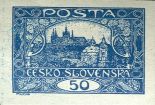Means of mechanisation
Scales and weights were the first means of mechanisation introduced in the postal service as tools necessary for the setting of postage after the publication of the 1722 tariff list. The weight units used until 1871, when the Austrian monarchy introduced a metric system, were the Austrian lot (17.5 g) and the grain or pound (0.56 kg, or 32 lots). This sub-collection contains a number of different types of letter and parcel scales, starting from equal-arm balances through lever and spring scales up to automatic and electronic scales, and a variety of lot and metric weights.
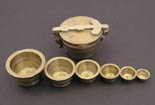
Typewriters, introduced by the Austrian Post in large post offices and control stations in the late 19th century, belong to more modern means. Another set of materials includes franking and cancelling machines; the oldest types were used to attach so-called wafer seals to telegraph blanks or stamp postal money orders. The machines became widespread in the interwar Czechoslovakia, with products made by Kolín-based firm Josef Klepáč being the most common. In the second half of the 20th century, they were replaced by the newer Grafos machines, used by post offices to serve similar purposes.
Addressing machines, later known under the name Adrema, first appeared in the 1930s. So-called franking machines are a significant part of the sub-collection. The first ones marketed by US firm Pittney-Bowes appeared in 1920. This type of machines is locally known as "Francotyp", the name of the most common product whose trial operation in the Czechoslovak postal service started back in 1926. Different kinds of adding machines and calculators, which started to become commonplace in the 1920s, are also represented in the set together with Francotypes. Other materials preserved in the sub-collection include telegraph blank, postage stamp and postcard vending machines. The set of modern mechanisation means contains examples of information technology, such as an APOST workstation currently used by all post offices across the Czech Republic. The first 125 offices, with 548 counters connected to the automated APOST system, appeared back in 1994.
Photo gallery
-
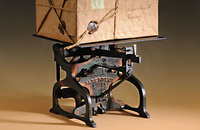 Decimal parcel scale
Decimal parcel scale Decimal parcel scale
Decimal parcel 50 kg scale belonged to the basic equipment of Austrian post offices. The displayed metal desk scale was made by Gebrüder Pfitzer in the second half of the 19th century.
-
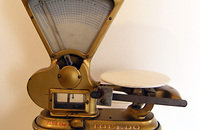 Toledo automatic scale
Toledo automatic scale Toledo automatic scale
Toledo automatic 2.5 kg scale with electric light, made in the USA in the 1930s.
-
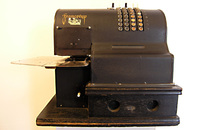 Francotyp A franking machine
Francotyp A franking machine Francotyp A franking machine
A 1938 Francotyp A franking machine. Franking machines started to spread across Czechoslovakia in 1926, and their stamp-shaped impressions with declared value and advertising texts soon attracted collectors.
-
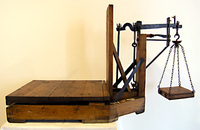 Decimal parcel scale
Decimal parcel scale Decimal parcel scale
Decimal parcel scale, small type, made by Kamor Úpice in the 1920s to 1930s.
-
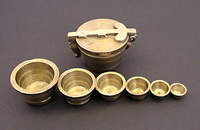 Set of lot weights
Set of lot weights Set of lot weights
The Austrian Post introduced lot weights (1 lot = 17.5 g) in 1722, after it became partially owned by the state; they were used to weigh and subsequently set the postage for each consignment. The regularly updated tariff lists set postage by half or full lots and specified maximum weight limits for each type of transported mail.
-
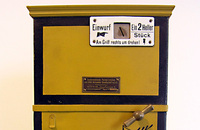 Telegraph blank vending machine
Telegraph blank vending machine Telegraph blank vending machine
Telegraph blank vending machines were installed by the Austrian postal and telegraph service in the early 20th century at certain post offices and public places. The machines dispensed a telegraph blank automatically, after the customer inserted a 2h coin. The supplier was a Viennese-based producer of postal stationery and tickets vending machines.

 Decimal parcel scale
Decimal parcel scale  Toledo automatic scale
Toledo automatic scale  Francotyp A franking machine
Francotyp A franking machine  Decimal parcel scale
Decimal parcel scale  Set of lot weights
Set of lot weights  Telegraph blank vending machine
Telegraph blank vending machine ![Postal museum [logo]](/PostMuzeum-theme/images/muzeum/logo_postal-museum.png)
